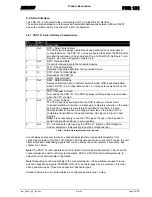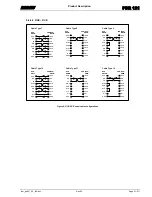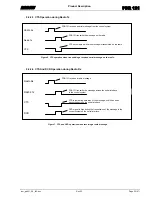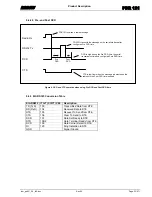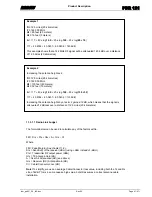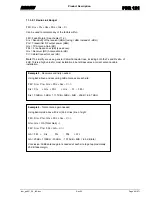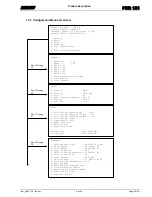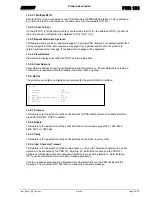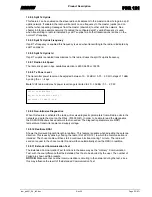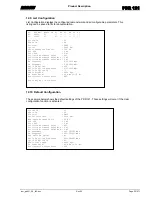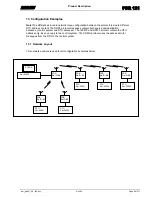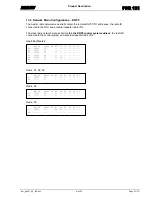
RADIUS
Product
Description
PDR 121
iom_pdr121_04_r02.doc
Rev 02
Page 43 (67)
Ex4:
f = 142MHz
distance = 40 0000 meters (40 km) (24.8 miles)
->
λ
= C/f = 300/142 = 2.11m
FSL
= 20*LOG(2.11/4
π
*40 000) =
-107.5dB
Ex1:
f = 460MHz
distance = 10 000 meters (10 km) (6.2 miles)
->
λ
= C/f = 300/460 = 0.65m
FSL
= 20*LOG(0.65/4
π
*10 000) =
-105.7dB
Ex2:
f = 460MHz
distance = 20 000 meters (20 km) (12.4 miles)
->
λ
= C/f = 300/460 = 0.65m
FSL
= 20*LOG(0.65/4
π
*20 000) =
-111.7 dB
Ex3:
f = 142MHz
distance = 10 000 meters (10 km) (6.2 miles)
->
λ
= C/f = 300/142 = 2.11m
FSL
= 20*LOG(2.11/4
π
*10000) =
-95.5dB
11.3.2 Line Of Sight Calculations
The formulas below are to be used when there is no terrain or obstacles that can interfere with the
radio signal (line of sight).
The first calculation to be made is the FSL, Free Space Loss. The FSL value tells how much the
signal strength is decreased due to the distance between the transmitter and the receiver.
FSL
- Free Space Loss
FSL
(dB) = 20*LOG (
λ
/4
π
*
R
)
Where;
R
= Distance between Rx and Tx Antenna. (Line of sight) in meters.
λ
= C/f = 300/f
Conclusion (using Ex2):
If the transmission power is 33 dBm (2w) the signal strength at the receiver antenna will be
33db - 105.7db = -72.7 db (Not taking cable losses at the transmitter in consideration).
If the receiver sensitivity is –110 dBm, this is ok. However, there are more factors for the link
budget calculation. Those are calculated by using the same formula as for no line of sight links but
by replacing the over air attenuation A with Free Space Loss - FSL.

